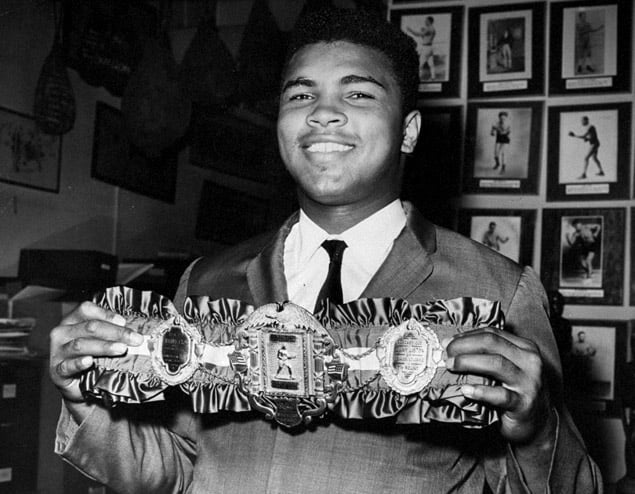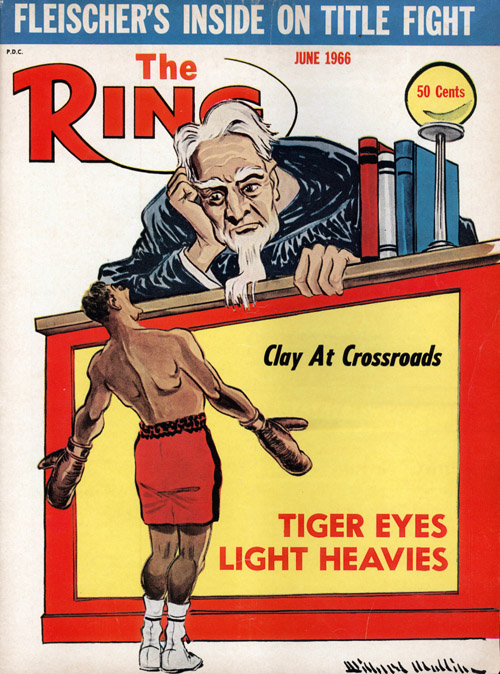Was Ali’s greatest fight as a conscientious objector?

 Muhammad Ali holding his RING heavyweight champion belt in 1964.
Muhammad Ali holding his RING heavyweight champion belt in 1964.
The fuse is ignited in HBO Films’ presentation of Muhammad Ali’s Greatest Fight when Justice William J. Brennan Jr. proclaims, “These days, Ali is a hero for taking a stand,” adding, “people are not going to like it if we send him to jail.”
In the very next scene, Chief Justice Warren Burger, played by Frank Langella, asks, “How can a man, any man, regardless of color, turn around when he is called to serve for his country, and say, ‘Hell no, I won’t go?'”
Their reactions set the stage for a riveting, combustible story which chronicles the contentious decision-making process among the nine Supreme Court judges.
The film broaches the former undisputed champion’s declaring himself to be a Muslim follower of the Nation of Islam, the subsequent changing of his name from Cassius Clay, and the ultimate resolution after he is stripped of his title as a conscientious objector to the Vietnam War, convicted of draft evasion and sentenced to five years in prison in June of 1967.
Airing on Oct. 5, Muhammad Ali’s Greatest Fight takes place during a time when the lone black supreme court justice among nine, Thurgood Marshall — played by Danny Glover — is mistaken for an elevator operator in his own office building by a fellow rider.
Still, it is Marshall who delivers a compelling, if not seemingly conflicted, speech during a rivoting meeting of the judges.
“I hate the Nation of Islam. Elijah Muhammad and his bunch of thugs and gangsters organized from the jail. They preach racial segregation. I am an integrationist,” says Marshall, who was born in 1908 — the year Jack Johnson defeated Tommy Burns to become the heavyweight champion.
“Oh yeah. A negro was the heavyweight champion of the world. What happened that very next day? They went out looking for the ‘Great White Hope’ to take back the title. There were race riots in Springfield, Ill., the home of Abraham Lincoln, and 89 negroes were lynched that year.”
 Written by Shawn Slovo and directed by Stephen Frears, the film opens with an initial glimpse of many brilliantly used pieces of archival footage, this one showing the 22-year-old Clay being prophetic in his assessment of what will transpire during his sixth-round stoppage of Sonny Liston in February of 1964 — his first of two victories over Liston:
Written by Shawn Slovo and directed by Stephen Frears, the film opens with an initial glimpse of many brilliantly used pieces of archival footage, this one showing the 22-year-old Clay being prophetic in his assessment of what will transpire during his sixth-round stoppage of Sonny Liston in February of 1964 — his first of two victories over Liston:
“Clay comes out to meet Liston, and Liston starts to retreat.
“If Liston goes out any farther, he’ll end up in a ringside seat.
“Clay swings with his left. Clay swings with his right.
“Look at young Cassius Clay fight.
“Liston keeps backing, but there’s not enough room.
“It’s a matter of time before Clay lowers the boom.”
After dethroning Liston, however, Clay reveals his new name to be Ali after having been converted by Malcolm X into the Nation of Islam, an organization which advised its members against “marrying out of my own race,” as Ali put it during one scene.
“If it wasn’t for the Muslim teaching,” says Ali. “I would be just another what we call ‘a bum negro fighter.'”
After introducing Clay’s case to the nine members for the first time, Burger states, “this is a waste of the court’s time. No one wants to hear this case.”
Brennan retorts:
“I want to hear this case, and I’ll tell you why. Ali never backed down from his beliefs. He took the consequences of refusing induction,” says Brennan, who is portrayed by Peter Gerety.
“He lost his title. He gave almost three years in his prime and millions of dollars so that he could stand up for what his conscience told him was right. He is clearly a man of great principle.”
Also starring is Christopher Plummer as Supreme Court Justice John Harlan II, the grandson of the lone judge to vote against segregation in 1896 after calling the white race the dominant race.
“If this court sends Ali to jail,” says Harlan, at one point, “It is, in effect, saying that there is one law for Whites, and one law for Blacks.”
How Harlan arrives at his assertion is among the many reasons that the film is worth seeing.
Photos: THE RING
Lem Satterfield can be reached at [email protected]















